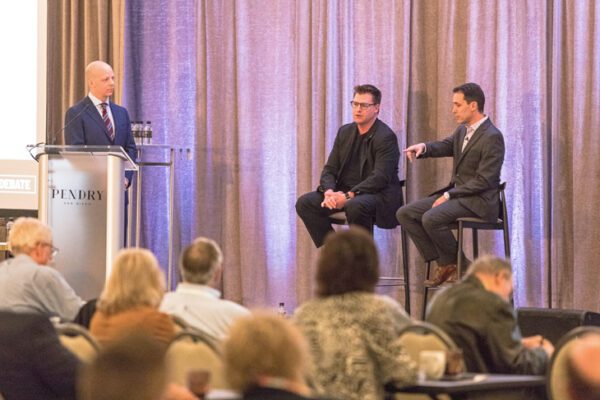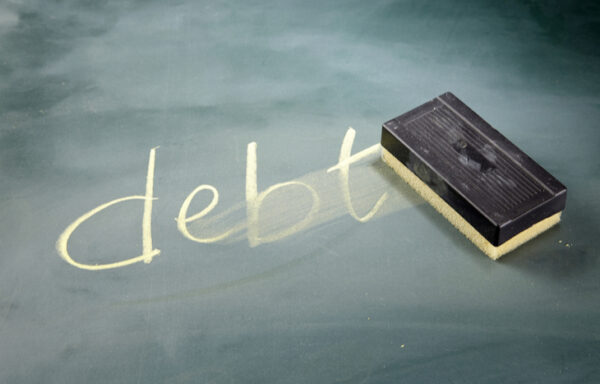How a Vegas-Beating Formula Changed Wall Street Forever
We have a moral issue with gambling. After all, one of our core beliefs is that wealth leads to Liberty. Therefore gambling leads to slavery.
It’s a dangerous game.
We don’t partake.
Even so, we’re fascinated by the numbers behind it all. They’ve certainly guided our investment philosophy and made us a winning trader.
In fact, we’ve learned a lot from Edward Thorp – the math genius and professional gambler who turned the odds on Vegas and then revolutionized Wall Street.
He’s our kind of man – a thinker.
Even though he spent years in the blackjack game, Thorp would argue he’s not a gambler. He’s an investor. He put down his chips only when the odds of winning were better than the odds of losing.
Thorp won a lot.
He won so much, he was kicked out of most casinos.
When Thorp put on disguises and taught others to do his work for him, Vegas changed the rules. With the math no longer in his favor, he took his skills to Wall Street.
It was a move that benefits us all… especially when it comes to managing our risk.
Revealing a Secret
You see, there’s a secret of the Vegas blackjack tables that aptly applies to investing.
Thorp used it to know exactly how much to bet on each hand so he’d be sure to end up a winner.
But it worked equally well on Wall Street. It made Thorp a mega-millionaire – worth some $800 million today.
He taught it to Bill Gross (whom Thorp mentored) and Warren Buffett. It treated them well too.
It remains a vital risk-management strategy for all three.
[mw-adbox]
It’s a formula called the Kelly criterion.
It looks like this: Kelly % = W – [(1 – W) / R].
We need just two important pieces of data to crunch the numbers.
First, we need our win probability – the “W” in the equation above. That’s the historic proportion of trades we’ve made that have led to a gain.
It’s simple to calculate.
First, we gather the results of at least our last 25 to 50 trades – not the dollars made or the percentages lost, just whether they were gains or losses.
Simply divide the number of positive trades by the total number of trades.
For example, if 35 out of 50 trades were wins, our “W” number would be 0.7.
From there… we need the “R.” That’s our win-loss ratio.
To get it, simply divide the average dollars gained on each winning trade by the average loss on each losing trade.
For example, if each win nets us an average of $500, while each loss costs us $1,000, our win-loss ratio (the “R” in our equation) is 0.5.
The Magic Number
With just those two simple numbers, we run the equation and get our Kelly percentage – the percentage of our overall portfolio we should devote to each trade.
Using our example above, the formula looks like this: Kelly % = 0.7 – [(1 – 0.7) / 0.5].
Our Kelly number is 10%.
That means, if we continue to invest as we have in the past, the ideal percentage of our trading portfolio to devote to each trade is 10%.
Sticking to that number ensures that we won’t run out of money before we make significant gains. It virtually eliminates the threat of a losing streak wiping us out.
In other words, the Kelly criterion ensures we are appropriately diversified.
Of course, we’re not talking about our nest egg. The key to this formula is that it is only for our trading portfolio – it’s not to be used for a set-it-and-forget-it portfolio. After all, we wouldn’t have enough data to accurately enter into the formula.
Use the Kelly formula in your trading portfolio and quickly see its value. It will greatly lower your overall risk.
It’s a Vegas secret that works even better on Wall Street.
[adzerk-get-ad zone="245143" size="4"]
About Andy Snyder
Andy Snyder is the founder of Manward Press. An American author, investor and serial entrepreneur, Andy cut his teeth at an esteemed financial firm with nearly $100 billion in assets under management. In the years that have followed, he’s become sought after for his outspoken market commentary.
Andy and his ideas have been featured on Fox News, on countless radio stations, and in numerous print and online outlets. He’s been a keynote speaker and panelist at events all over the world – from four-star ballrooms to Capitol hearing rooms – and has rubbed shoulders with lawmakers, lobbyists and Washington insiders. He’s had lunch with John McCain… fished with America’s largest landowner… and even appeared on the Christmas card of one of Hollywood’s top producers.
Today, Andy’s dissident thoughts on life, Liberty and investing can be found in his popular e-letter, Manward Financial Digest, as well as in the pages of Manward Letter. He also is at the helms of the award-winning VIP Trading Research Services Alpha Money Flow and Venture Fortunes. Andy resides on 40 bucolic acres in rural Pennsylvania with his wife, children and a steadily growing flock of sheep.






